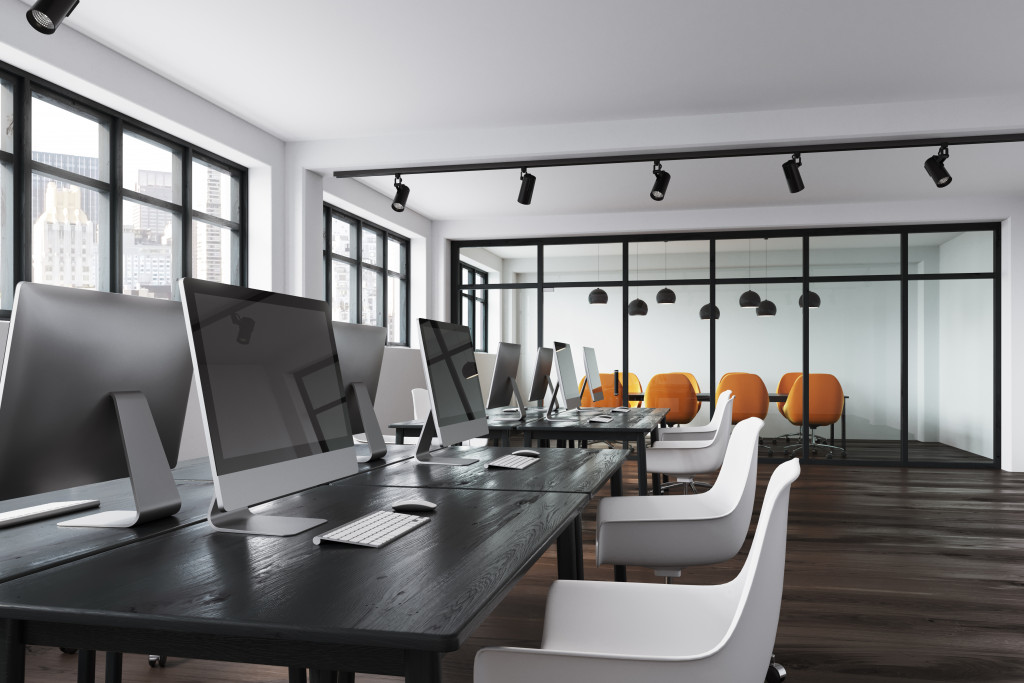The COVID-19 pandemic continues to stretch on interminably, and its effects on the world have been unforeseen and unprecedented. The landscape of the workplace alone has seen — and will continue to see — many changes. As governments around the world tried to prevent the spread of the virus, many industries and institutions had to be shut down — some temporarily, others permanently. Many of those that remain standing have had to make changes in their operations. Staggered shifts, remote work, on-site social distancing, and face mask-wearing are the most evident ones we have seen.
But apart from the day-to-day operations of businesses, it’s very likely that we will also see changes in office design and structure. This will in turn also impact office culture and routine. Let’s take a look at those possibilities.
Office structure and design
The COVID-19 virus is reported to be airborne, so open-air spaces have been dubbed safer than closed ones. Health institutions such as the World Health Organization (WHO) recommend the use of natural ventilation, encouraging people to open their windows if that is a safe option. Regarding the use of heating, ventilation, and air conditioning (HVAC) systems, they recommend increasing air filtration to circulate cleaner air around the workplace. If you plan to use your air systems, make sure to have them checked and serviced by specialists such as jhfoster.com.
Structural and interior design for office spaces are likely to see sizable alterations because offices can’t afford to be as populated as before. With many health experts predicting that social distancing regulations may still be in observance throughout most of 2021, office spaces will have to accommodate fewer employees at a time. Architects and interior designers theorize that corporate office spaces may be wider and shorter or taller and thinner to have fewer employees working per level even for the short term.
Partitions will be used across commercial spaces liberally, as we already see them in many public spaces such as restaurants. Individual workspaces may be converted into cubicles to allow appropriate distancing between workers and support the acoustic requirements of videoconferencing.
We will also be using more contactless methods of interacting with our environment. Switches and knobs will be light- or motion-sensor activated to avoid touch and minimize the need for disinfecting those frequently touched surfaces.
Work culture and routine
Due to the fear of contagion, the workplace culture will also see some changes, some of which have already been set in motion. Employers will stagger their workers’ shifts to minimize the on-site office population and have their remote workers continue to carry on with their work virtually as much as possible. Along with distancing and wearing face masks, regular temperature checks may continue to be a part of the daily work routine.
We may also see companies focus more on the well-being of their employees, on mental, emotional, and physical levels. Humans are social creatures, and the isolation we’ve been forced into since the start of quarantine has resulted in depression and anxiety. The need for isolation conflicts with the human desire for social interaction, which leads to a community-health conundrum that we will all need to deal with.
COVID-19 has also led to an increased demand for automation systems for commercial use. Retail top dog Amazon has been employing robots to sort, pack, and ship warehouse orders, and fast food chains such as McDonald’s have been experimenting with robot cooks.
Warehouses and kitchens are not the only places that will see a change of laborers. Artificial intelligence (AI) is predicted to take over many clerical jobs. As the World Economic Forum predicts, human jobs in data entry, accounting, administrative work, stock-keeping, and other similar lines of work will see a decrease in demand. AI is already making it possible for companies to access cloud computing services and accounting software that put human IT workers and accountants at risk of losing their jobs.
This will exacerbate the already alarming unemployment statistics. But experts say that the rise of industrial automation may also allow humans to reskill themselves to adapt to the workplace’s new demands. Of course, companies and schools will have to equip them with the tools to re-train them for this future.

There are many things we will have to prepare ourselves for soon. Our routines at the workplace will change because of the need to follow social distancing. There won’t be a one-size-fits-all arrangement, as interior designer Ben Wilkie says, so business owners and leaders must collaborate with their employees to create a safe and productive working environment.

